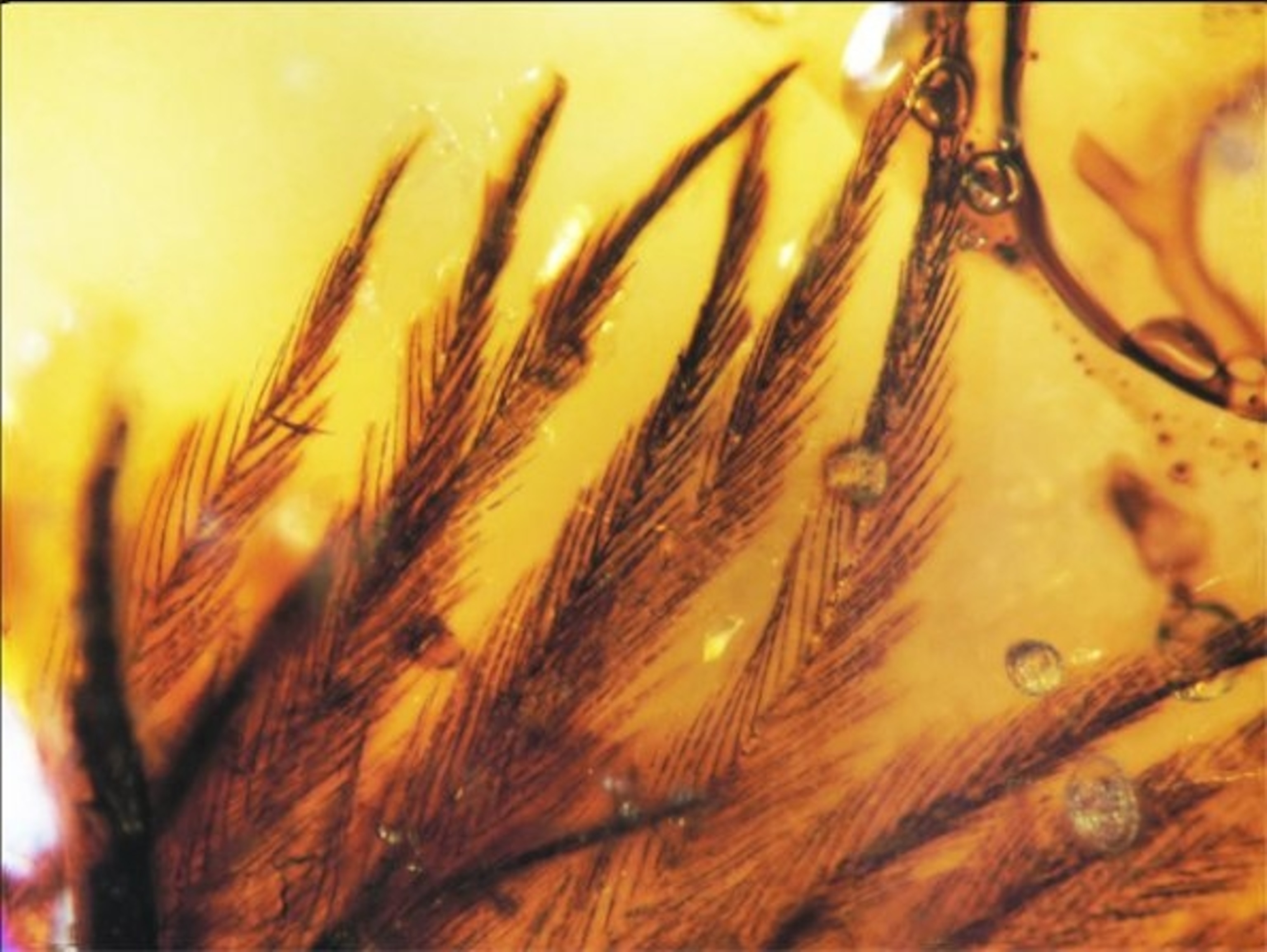
Amber trapped dinosaur feathers at different stages in their evolution
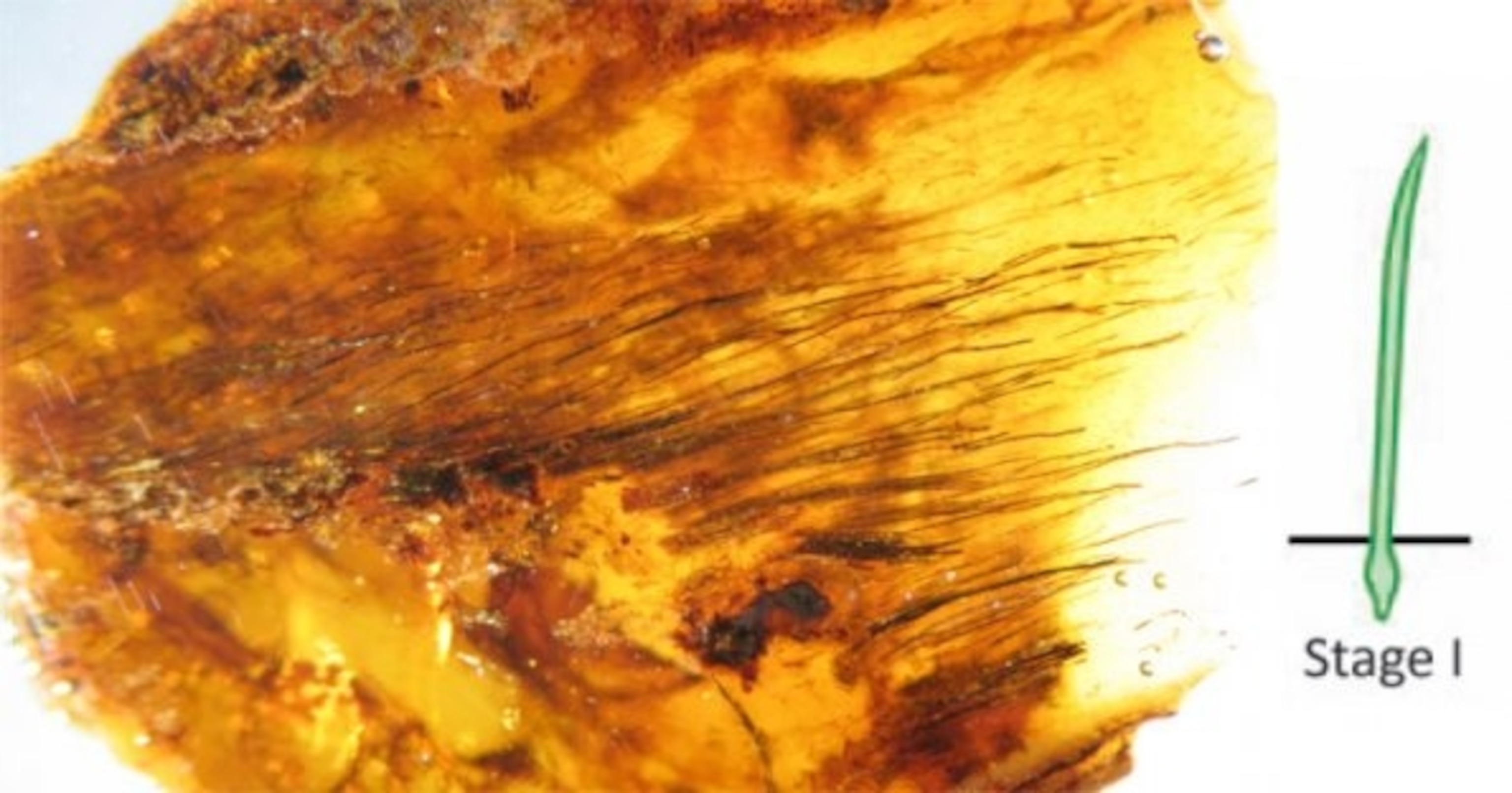
This is the first stage. They’re simple, single filaments, found in dense forests and unrecognisable as feathers. They’re different from the hairs of mammals because they don’t have any scales along their length. Nor are tubes from fungi or plants for they lack the thick cell walls that these groups have. They look a lot like the downy “dino-fuzz” that covered Sinosauropterx, the first dinosaur to be found with evidence of feathers. Sinosauropteryx’s fuzz was largely a reddish-brown colour, while those found in the amber ranged from dark to almost transparent.
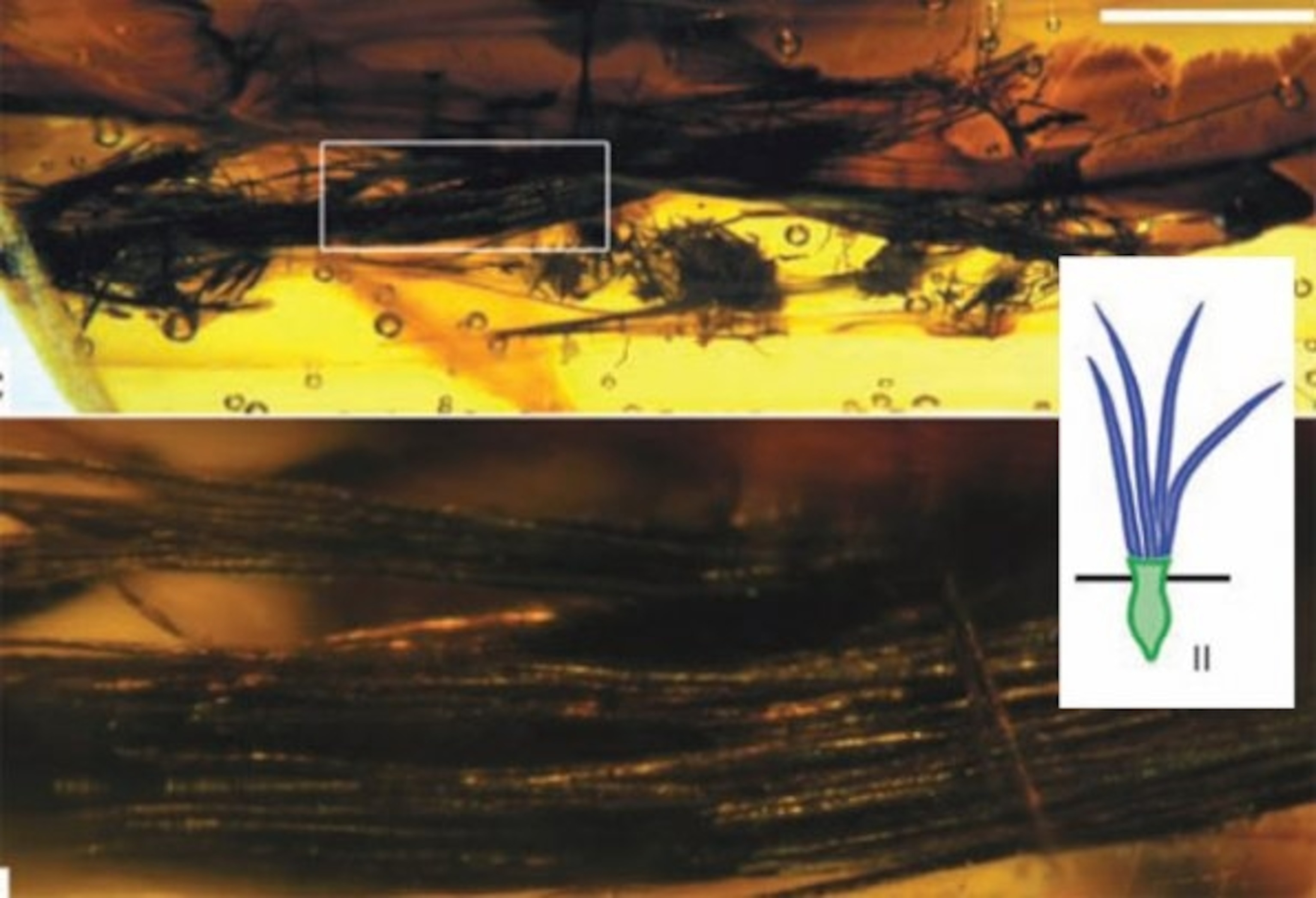
In the second stage, the filament has turned into a cluster of ‘barbs’. In a modern feather, the barbs branch off from a central stalk or ‘rachis’ but at this stage of feather evolution, the rachis doesn’t exist yet. Instead, the barbs all emerge from a shared base. They’re closest to the fuzz of Sinornithosaurus, another feathered meat-eating dinosaur – possibly venomous, and one of the earliest members of the group that included Velociraptor and Deinonychus.
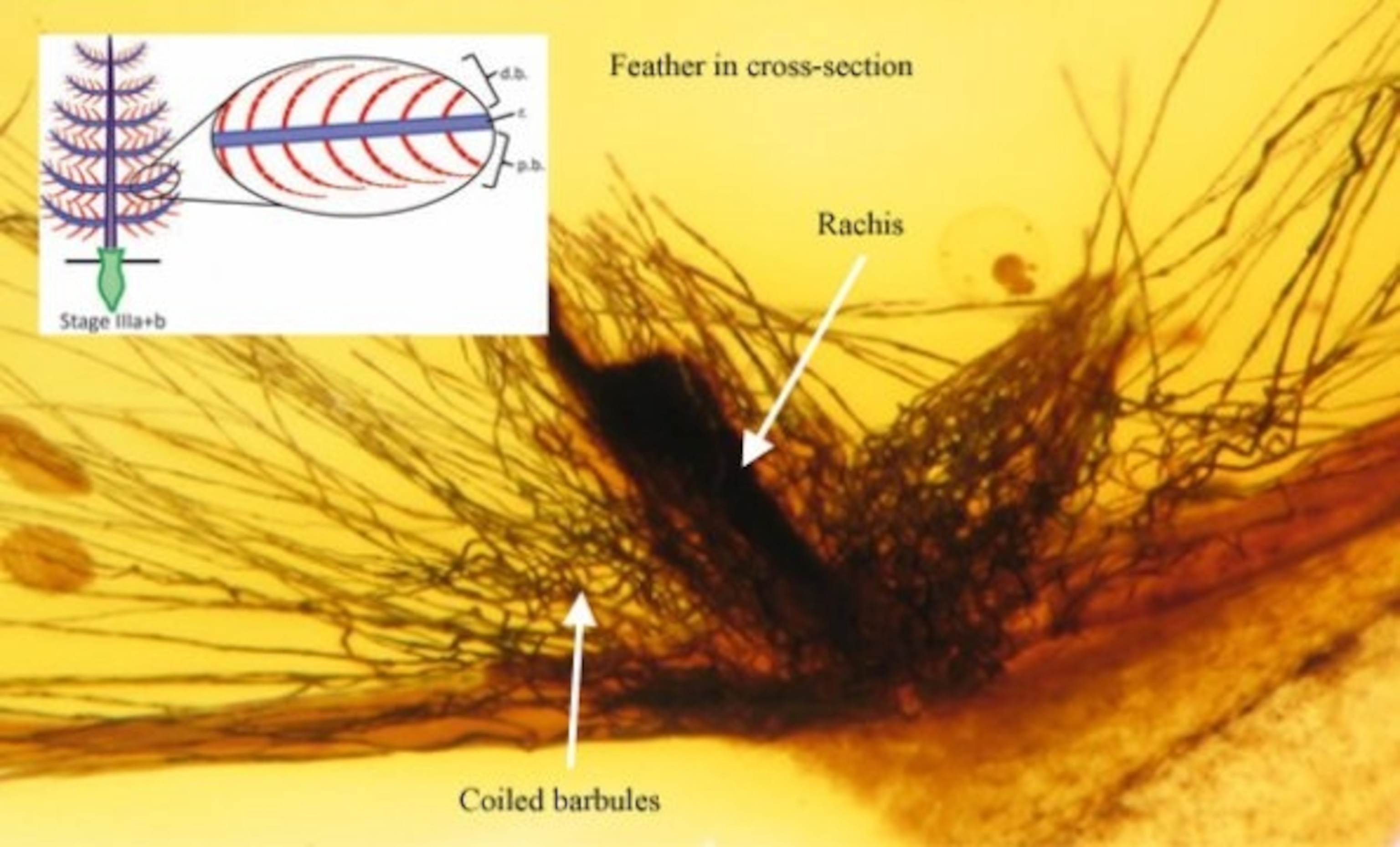
In stage three, the barbs partially unite to form a central rachis, and even smaller filaments called barbules start to branch off from the barbs. This type of feather is also found in McKellar’s amber and some of them have barbules wit tight coils at their bases. Grebes – modern diving birds – have similar coils in their barbules. When they dive, the coils expand and allow the feathers to absorb water, making the grebe less buoyant and allowing it to sink. It looks like this adaptation was already around in the Cretaceous period.
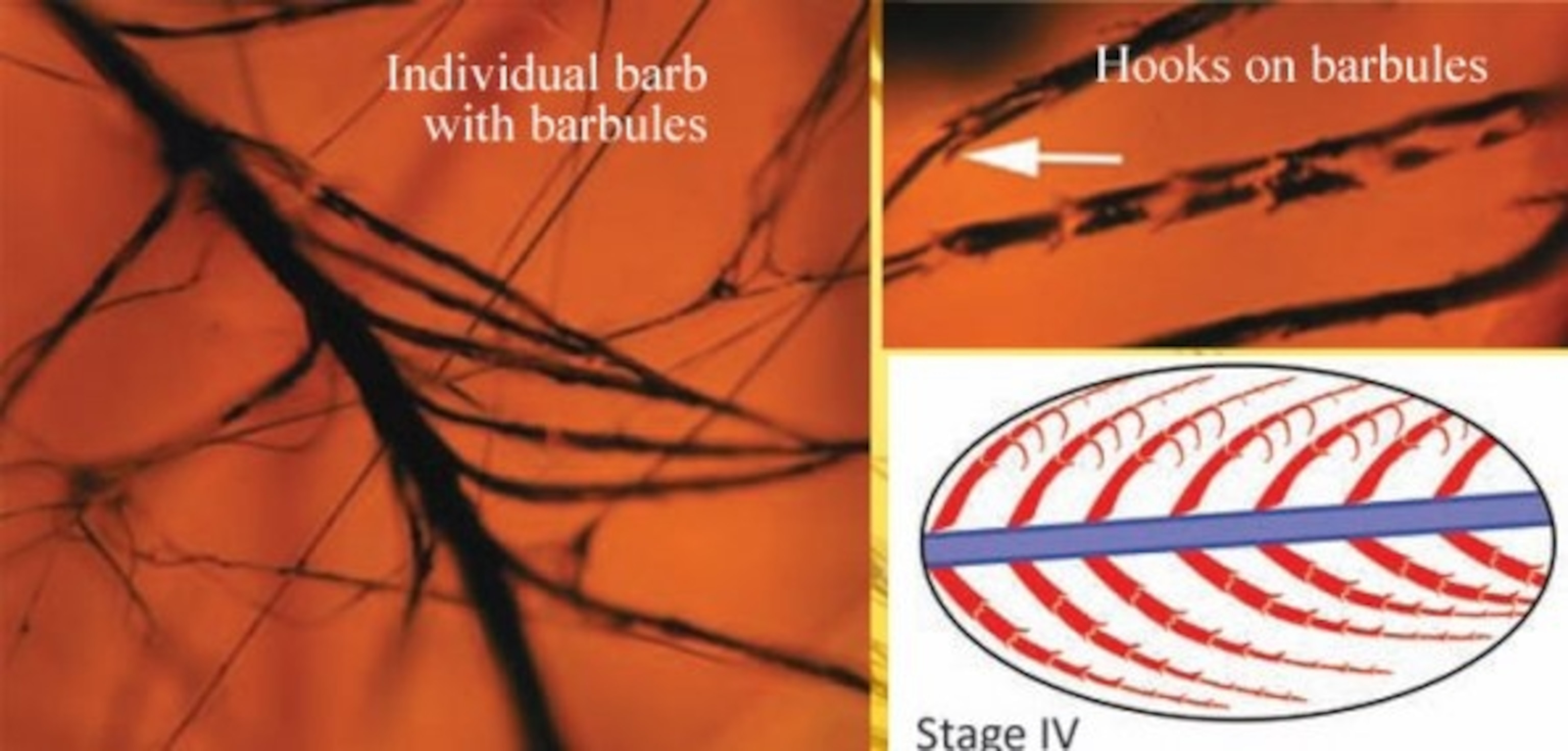
In the final stages of feather evolution, the barbules develop small hooks, which allowed neighbouring barbs to interlock like strips of Velcro. These hooks turned the feathers into flat vanes, which in turn allowed them to generate lift. These tiny structures helped birds to conquer the air, they’re the ones that cover the bodies of most modern birds, and they too are found in the Cretaceous amber.
Reference: McKellar, Chattertton, Wolfe & Currie. 2011. A Diverse Assemblage of Late Cretaceous Dinosaur and Bird Feathers from Canadian Amber. Science http://dx.doi.org/10.1126/science.1203344
Images courtesy of Science/AAAS
More on feathered dinosaurs:
- Earliest bird was not a bird? New fossil muddles the Archaeopteryx story
- Dramatic restructuring of dinosaur feathers revealed by two youngsters of same species
- The renaissance of technicolour dinosaurs continues (and the gloves come off…)
- What colours were dinosaur feathers?
- Evidence that Velociraptor had feathers
- Microraptor – the dinosaur that flew like a biplane
- An insider’s look at the feather, a marvel of bioengineering
